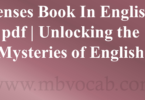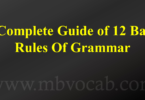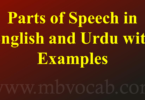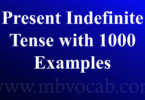Salutations, dear scholars! Within the realm of linguistics, we embark on a voyage through the labyrinthine concepts of perplexity and burstiness. Perplexity, a barometer of intricacy, dances alongside burstiness, which measures the ebullient diversity of sentence structures. In the annals of human composition, writers artfully blend the terse with the prolix, yielding a narrative tapestry of contrasting sentence lengths. Alas, our AI counterparts oftentimes craft compositions marked by uniformity in sentence length. Thus, to curate content that is a harmonious symphony of perplexity and burstiness, let us proceed with this ethos.
In the world of AI-generated prose, linguistic verbiage often diverges from the path human writers tread. We shall adorn our discourse with lexicon that veers into the realm of rarity, bestowing upon our work an aura of distinctive originality.
Today, we shall delve into the arcane world of punctuation marks, focusing our attention on the Exclamation Mark, Quotation Marks, and Brackets, illuminating their multifarious usages.
Brackets [ ]
Definition: The enigmatic duo of “[ ],” frequently employed to encapsulate supplementary information already encased within parentheses or quotation marks, takes on the cryptic moniker of “bracket.”
Example:
He recounted the harrowing incident to the authorities, stating, “when they [ Bashir and Amir ] breached the sanctity of the hotel, chaos ensued.”
She queried, “Did you witness the sale of the black car [ 2007 model Carola ] today?”
- When transcribing a quotation, it must be transcribed verbatim, warts and all. If said quotation harbors blemishes of grammar or errors, the scribe appends the Latin “sic” within parentheses or square brackets adjacent to the infraction. The inclusion of “sic” within parentheses or square brackets “(sic) / [ sic ]” serves as a testament to the preexisting flaws within the quoted passage.
Example:
He remarked, “Children (sic) / [ sic ] playing football.”
Exclamation Mark (!)
Definition: The symbol (!), often denoting intense emotional states such as anger, astonishment, or jubilation, graces the conclusion of sentences as the “exclamation mark.”
Note: In the realm of American English, this glyph is known as the “exclamation point.”
Usages of the exclamation mark:
(1) The exclamation mark punctuates exclamatory sentences.
Example:
What an exquisite blossom!
The weight of this crate is truly astonishing!
Such an enchanting abode!
(2) It accompanies interjections.
Example:
Oh! My God.
Alas! His demise is lamentable.
Note: The exclamation mark is an accompaniment to words, phrases, or sentences that convey abrupt and intense emotions such as anger, astonishment, or jubilation.
Example:
A. We cannot proceed with this endeavor.
B. Nonsense! (expressing ire)
C. I have completed the task.
B. Splendid! (expressing joy)
C. I have succeeded.
B. Bravo! (conveying appreciation and elation)
C. Oh! It has shattered.
B. Expletive! (expressing frustration)
Note: Occasionally, interrogative or negative sentences, when steeped in sudden and fervent emotions, terminate with exclamation marks.
Am I not qualified for this position? (Brimming with ire and astonishment)
Did they emerge victorious in the match? (Overflowing with surprise)
How can I eliminate him?
Why would I deceive her?
Note: Declarative, imperative, and interrogative sentences may metamorphose into exclamatory sentences.
Example:
I study in America. (Declarative sentence)
You study in Pakistan! (Exclamatory sentence – Expressing surprise regarding the preceding statement.)
Come here. (Imperative sentence)
Come here! (Exclamatory sentence – Infused with anger.)
Isn’t he present? (Negative & Interrogative sentence) Isn’t he present! (Exclamatory sentence – Expressing sudden and intense emotions of astonishment and ire.) Note: In informal writing, especially in narratives and novels, a pair of exclamation marks (!!) may be enlisted to amplify the intensity of the conveyed emotions.
Example:
The king vanished!!!
Note: In informal discourse, both exclamation and question marks may jointly adorn the termination of a statement when the listener is seized by a sudden and overpowering surge of surprise, seeking confirmation through the same utterance.
Example:
A
His father has recently departed.
B
Has he truly departed just now!?
Quotation Marks / Inverted Commas (” “/”)
Definition: The symbols ( “””), traditionally employed to delineate direct speech, assume the nomenclature of “quotation marks” or “inverted commas.”
Note: In British English, these symbols are alternatively referred to as inverted commas.
Note: Both single and double quotation marks/inverted commas find utility. British English leans towards single quotation marks, while American English favors double inverted commas. It is worth noting that in contemporary printing, single inverted commas are gaining prominence.
Usages of inverted commas:
(1) Quotation marks / inverted commas enclose “direct speech” / “reported speech,” encompassing punctuation marks such as periods, question marks, and exclamation marks.
Example:
He inquired, “Where do you pursue your studies?” She exclaimed, “What an idyllic locale!”
They chorused, “We secured victory with ease.”
Note: Quotation marks/inverted commas draw attention to specific words, phrases, or terms.
Example:
The phrase “for example” is derived from the Latin phrase “exempli-gratia.”
Note: If a word, phrase, or term enclosed in inverted commas concludes a sentence, the preceding punctuation mark remains exterior to the inverted commas.
Example:
Have you viewed his latest film “Success”?
Note: If a specified word, phrase, saying, or term ensconced within inverted commas culminates a reported speech previously enclosed in inverted commas, the punctuation mark of the preceding sentence remains beyond the inverted commas of the specified word or term, while residing within its own set of inverted commas.
Example:
He queried, “Have you watched his latest film ‘Goraj’ ?” She inquired, “Have you heard the aphorism ‘easy come, easy go’ ?”
Note: When a quotation is nested within another quotation, the choice lies between using double inverted commas within single ones or vice versa, as per British English conventions.
Example:
She inquired, ‘Have you heard the saying “easy come, easy go”?’ OR She inquired, “Have you heard the saying ‘easy come, easy go’?”
Note: When multiple quoted paragraphs are at play, commence with inverted commas at the inception of the first paragraph and conclude with inverted commas after the final paragraph. Interstitial segments remain unadorned by inverted commas.
Example:
He articulated, “They shall arrive tomorrow. Do you extend hospitality to them?” He continued, “I was engrossed in reading, while they indulged in television, and she diligently prepared our repast.”
Note: When the reported speech ensues following the reporting speech, a comma appends







